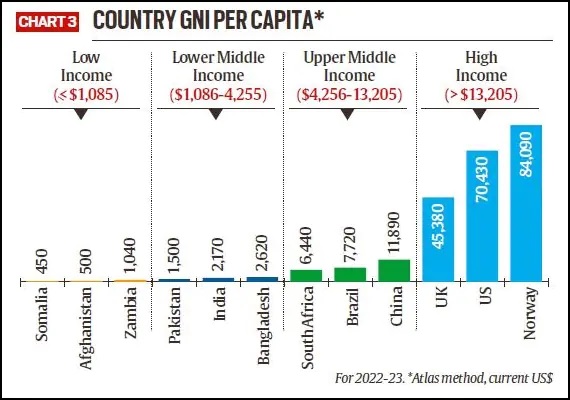
1) Sadbhavna Diwas 2022: Birth Anniversary of Rajiv Gandhi
•India celebrates Sadbhavna Diwas in memory of Rajiv Gandhi’s birth anniversary. Sadbhavna Diwas 2022 commemorates the 78th birth anniversary of Rajiv Gandhi on 20th August 2022. Sadbhavna Diwas was instituted after the death of Rajiv Gandhi in 1992, by Congress. Sadbhavna Diwas promotes peace, harmony, empathy, and unity among all citizens of India. On this several cultural events and contests are organized across the country.
2) Akshay Urja Diwas 2022: India Observes Renewable Energy Day
•Every year on the 20th of August India observers Akshay Urja Diwas or Renewable Energy Day. Akshay Urja Diwas 2022 or Renewable Energy Day aims to spread awareness about the development and adoption of renewable energy in India. Akshay Urja Diwas 2022, marks its importance by promoting and lining up the alarming rate of depletion of Natural resources. This day makes people aware of the use of natural resources like wind energy, solar energy, and hydropower.
•Akshay Urja Diwas was first established in 2004 to support renewable energy development programs in India and promote the usage of natural resources. In 2004, the first event was facilitated by then Prime Minister Manmohan Singh, where he released a stamp with 12000 children forming a human chain to promote the use of green energy sources. The Ministry of New & Renewable Energy Source (MNRE) planned to arrange the first informative campaign or event along with the Prime Minister of India Manmohan Singh.
3) India’s First Portal On Arrested Narco Offenders ‘NIDAAN’
•A first-of-its kind database of arrested narcotics offenders has been made operational for use by various central and state prosecution agencies tasked to enforce anti-drugs laws in the country. The portal–NIDAAN or the National Integrated Database on Arrested Narco-offenders–has been developed by the Narcotics Control Bureau (NCB). It is part of the narcotics coordination mechanism (NCORD) portal that was launched by Union Home Minister Amit Shah on July 30 in Chandigarh during the national conference on ‘Drug trafficking and national security’.
4) Shipping Ministry Proposes Amendment To 110 Year-Old Indian Ports Act
•The Ministry of Ports, Shipping and Waterways has released a draft to amend the Indian Ports Act, 1908, which aims to bring in sweeping reforms in the sector by bringing non-major ports into the national fold, creating a new mechanism for resolution of disputes, and empowering maritime state development council (MSDC). The Indian Ports Act, 1908 is more than 110 years old.
•It has become imperative that the Act is revamped to reflect the present-day frameworks, incorporate India’s international obligations, address emerging environmental concerns, and aid the consultative development of the ports sector in the national interest. However, sector experts say the bill could face the same fate as the Major Ports Authority Act amendment, which was introduced last year and faced criticism over the possibility of higher concentration of power in the hands of the central government, which controls 12 major ports of India.
5) India to buy Six Tu-160 long-range bombers from Russia
•India intends to purchase Tu-160 bomber from Russia, in order to boost its strategic force. America objected to its initial flight because of how hazardous this bomber is in nature. Tupolev Tu-160 bomber can reach a peak speed of 2220 kmph. The maximum weight that this aircraft can carry while flying is 110,000 kg. It has a 56-meter wingspan. Russia produces the tactical bomber known as the Tu-160 bomber. As a result, the bomber may carry out an attack at a distance of thousands of kilometres from its base.
6) ISRO received a Crew Module Fairing from HAL for Gaganyaan mission
•Hindustan Aeronautics Limited (HAL) handed two pieces of space equipment to the Indian Space Research Organization (ISRO) for use in the Gaganyaan mission. This is the second crew module fairing (CMF) that India’s top space agency has purchased from HAL for the mission. Even though both of these CMFs will be used in some capacity, the first experiment will use the CMF that ISRO obtained from HAL.
7) HDFC Bank opened the first all-women branch in north Kerala
•HDFC Bank inaugurated an all-women branch in Kozhikode, north Kerala. Mayor of the city Corporation Beena Philip opened the branch of HDFC Bank. As of March 31, 2022, women made up 21.7% (21,486) of the workforce, according to the bank. By 2025, the private lender wants to raise it to 25%. Deals beyond a certain threshold require regulator approval, which keeps an eye on unethical business practises in the marketplace.
8) HAL to establish its first marketing office abroad in Malaysia
•The Hindustan Aeronautics Limited (HAL) inked a Memorandum of Understanding (MoU) to establish its first international marketing and sales office in Kuala Lumpur in anticipation of a potential agreement for the Light Combat Aircraft (LCA) Tejas in Malaysia. The change has taken place because Tejas is being considered by Malaysia as a Fighter Lead-in Trainer (FLIT) aircraft for the Royal Malaysian Air Force.







